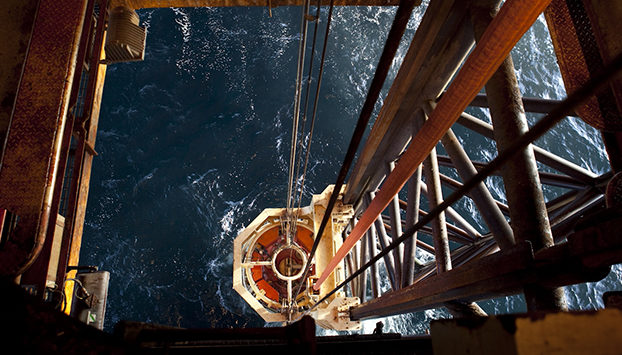
Oil prices will stay low for as long as 10 years as Chinese economic growth slows and the U.S. shale industry acts as a cap on any rally, according to the world’s largest independent oil-trading house.
“It’s hard to see a dramatic price increase,” Vitol Group BV Chief Executive Officer Ian Taylor told Bloomberg in an interview, saying prices were likely to bounce around a band with a mid-point of $50 a barrel for the next decade.
“We really do imagine a band, and that band would probably naturally see a $40 to $60 type of band,” he said. “I can see that band lasting for five to ten years. I think it’s fundamentally different.”
The lower boundary would imply little price recovery from where Brent crude, the global price benchmark, trades at about $35 a barrel. The upper limit would put prices back to the level of July 2015, when the oil industry was already taking measures to weather the crisis.
The forecast, made as the oil trading community’s annual IP Week gathering starts in London on Monday, would mean oil-rich countries and the energy industry would face the longest stretch of low prices since the the 1986-1999 period, when crude mostly traded between $10 and $20 a barrel.
Vitol trades more than five million barrels a day of crude and refined products — enough to cover the needs of Germany, France and Spain together — and its views are closely followed in the oil industry.
Taylor, a 59-year-old trader-cum-executive who started his career at Royal Dutch Shell Plc in the late 1970s, said he was unsure whether prices have already bottomed out, as supply continued to out-pace demand, leading to ever higher global stockpiles. However, he said that prices were likely to recover somewhat in the second half of the year, toward $45 to $50 a barrel.
For the foreseeable future, Taylor doubts the oil market would ever see the triple-digit prices that fattened the sovereign wealth funds of Middle East countries and propelled the valuations of companies such as Exxon Mobil Corp. and BP Plc.
“You have to believe that there is a possibility that you will not necessarily go back above $100, you know, ever,” he said.
The problem is that “there is so much more supply” while the global economy is more efficient in consuming crude. On top of that, Iran is returning to the market and growth in emerging markets, the biggest engine of oil demand, is slowing.
“China has changed,” he said.
Oil prices plunged after the Organization of Petroleum Exporting Countries in November 2014 diverged from its traditional policy of adjusting supply to manage prices, announcing it would maintain output to defend its position in the market. The group formally dropped any production limits in December, boosting output and intensifying a price war against higher-cost producers including U.S. shale operations, the North Sea, Canada’s tar sands and deep-water discoveries in Brazil and Angola.
Taylor said there could be an agreement between OPEC and non-OPEC countries like Russia to cut production. “It’s probably slightly against, 60-40 against, but it’s a real possibility,” he said,
While the price slump has hurt oil producers, independent traders such as Vitol and its competitors Trafigura Group Pte, Glencore Plc, Gunvor Group Ltd, Castleton Commodities International LLC and Mercuria Energy Group Ltd. are profiting from the increase in volatility.
These companies also benefit from a market structure called contango — where forward prices are higher than current costs. This allows traders to buy oil, store it in tanks and use derivatives to lock in a higher selling price for a later date.
Taylor said that Vitol, which celebrates its 50th anniversary this year and its owned by its employees, would report net income in 2015 above the $1.35 billion it earned in 2014. However, he said the company wouldn’t match the record of nearly $2.3 billion of 2009. Taylor said that the company, which doesn’t publicly release its profit, planned to take write-downs in its exploration and production business and make provisions against customers defaulting on contracts. The company, formally based in Rotterdam, has its major trading floors in London, Geneva, Singapore and Houston.
Recommended for you
